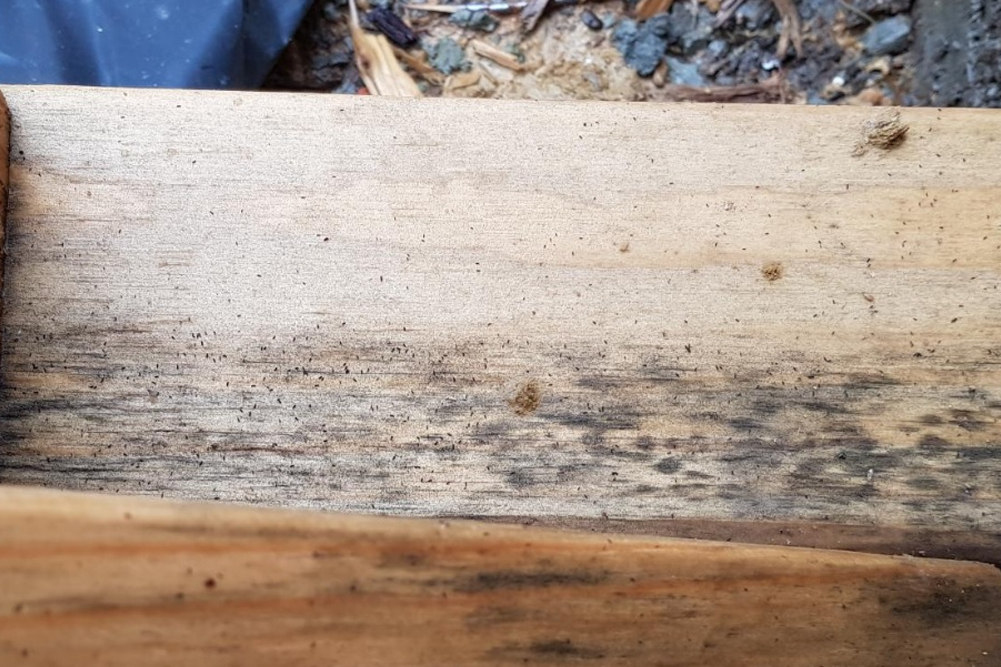Spores that can undermine your health completely – here’s why
Spores in the air are usually of a fungus or mould nature. This group of fungi also include mushrooms and yeast. Fungi is both indoors and outdoors. It can grow on anything. Some places you may find fungi and mould on are your floors, roof, walls, doors, clothes, and cupboards.
There are many different types of spores. Mould normally looks like small fuzzy spots, a stain or a smudge. If your home has problems with being damp and mouldy you need to get the problem fixed urgently as this can have a big impact on all your health and continual wellbeing.
Causes of spores in your home or workplace
Spores is a natural substance that plays an important role in our ecosystem. It speeds up the decomposition of organic materials in nature. When it is inside is when it becomes a problem. Mould grows in damp, poorly ventilated and wet areas. If you have mould in your home, you might smell it before you see it. If you can smell the mustiness of mould you need to start checking places in your home where there isn’t much air circulation. This can include behind furniture and paintings, at the back of cupboards and wardrobes. Sometimes it’s hidden within wall cavities. Other signs can be water stains, condensation on the inside of windows, peeling or cracked paint, peeling wallpaper and puddles of water forming under or around the house.
Types of spores causing mould in your home
There are thousands of different species of mould. Some of the common ones in Australia are aspergillus which is a green or grey mould that you will mostly find on food and in air-conditioning systems. People with healthy immune systems can be affected by breathing it in over a period of time and it will lower your immunity. In people with weakened immune systems, it can lead to an infection in the lungs or sinuses.
Another type is Cladosporium, a green or brown mould with a furry type texture. This is found on household items like carpets, material, upholstery, timber furniture, food and unclean refrigerators. This is considered the primary source of mould and fungal allergies. Stachybotrys or black mould, is a dark green or black mould with a slimy look. This grows in areas that are damp, wet or humid. When left over a long period of time it will produce toxic spores. If you have any mould in your home or work, it is best to remove it urgently. Mould can make you seriously ill if breathed in over a length of time.
How to get rid of mould and fungus exposure
When removing mould from your home make sure you have ample ventilation. Open all doors and windows. You should wear protective clothing like a shower cap, rubber gloves, P1 or P2 face mask and goggles. You can get these from stores like Bunnings or other hardware stores. Don’t brush the mould, as this can flick spores into the air. Avoid vacuuming mould unless your vacuum has a good HEPA filter, which traps particles rather than recirculates them back into the air.
The best way to remove any type of fungal material is to wipe it away using a household cleaner or white vinegar and a microfibre cloth. Rinse the cloth regularly. If you’re using a store-bought specialist mould-removal cleaning product, always follow the instructions on the label. Once finished dry the area thoroughly by letting the air circulate. The best way to control mould is to find the source of the moisture and fix it. If you don’t it will regrow.
Effects on your health
When mould reproduces, it makes tiny particles called spores. Many people will experience health problems from contact. When spores spread they affect your health. Health problems can be serious especially for people who have existing respiratory issues or a compromised immune system.
Alison had a whole range of unexplained symptoms. Foggy head, some sinus, occasional itchiness, feeling tired despite the fact she had a good, healthy diet. Alison was not overweight, managed her stress reasonably well, exercised twice a week and managed to spend her weekends out in the sunshine with her family and dog. No Alison was not allergic to dogs nor did her sensitivity test show dogs or cat sensitivities. An allergy test showed very little and her sensitivity test for inflammation done at our office did show she was sensitive to wheat, yeast, lactose and exposed to mould or spores. Alison swore to us that there was no mould in her home or office environment. I doubted that though and asked her to go home and to the office and take a good look around.
Was the test wrong?
After several appointments Alison was getting better with the improvements and supplements, we suggested but still not to the extent I would have liked. Again, I asked Alison to check for mould. She insisted she had been over her home and office with a fine tooth comb and there was nothing anywhere. Nevertheless, she would take another look.
Alison returned next visit with a sheepish look on her face. On enquiry she admitted she had found the mould. Where I excitedly asked. In the back of the cupboard down the bottom where she kept her shoes. She turned the house upside down looking for it. She finally found it. It was so bad she had to get someone to treat it. Unbeknown to her water had leaked between the walls and the whole, hidden, internal wall was green. As soon as she had it treated and got rid of it Alison’s health improved 100%.
Another example of hidden mould
A similar case was with Penny who found it on her windowsills, of all places in the bedroom behind a thick curtain she had never thought to open as it wasn’t the primary window. This was within several metres of her bed so Penny was sleeping next to the mould every night.
This is a good example of how people get very sick from mould infestations which blow their spores into the air all around you. Air conditioning and the wind spread out all the spores.
If you have mould or fungus exposure in your environment, you may experience symptoms such as wheezing or coughing, sneezing, irritated eyes, runny or blocked nose and dry skin. Apart from all the symptoms I mentioned above. You can have an allergy test or a sensitivity test and it is urgent you minimise exposure. Unfortunately, oral antihistamines, nasal sprays or immunotherapy don’t really do much as mould is a slow poison for your immune system.
If you already have pre-existing respiratory problems, you will be super sensitive to mould. Breathing in the spores puts an asthmatic at a high risk for a fare up of asthma. Also, if you have a weakened immune system or chronic lung diseases you risk even more serious health issues.
Mould prevention
You can take the following steps to reduce your exposure. Start by cleaning it off the walls, ceilings and other areas of your house, use high-efficiency air filters such as a HEPA filter. You can get these put into your air-conditioning or even get standalone air purifiers. Make sure there’s enough natural ventilation in your home. Make sure you use the extractor fan in the bathroom and seal leaks in bathrooms and roofs, clean the gutters and under the house. Also check your indoor pot plants. These can promote mould growth if not looked after. Also, make sure you thoroughly dry or remove wet carpets. Treat rising damp as soon as it’s detected. You do this by fixing leaks and installing a damp-proof course at the base of the wall and avoid organic mulches and compost heaps in the garden.
For more information on fungus infections check out my other article on https://www.wellbeing.com.au/body/health/fungus-infections-cause-harm-your-whole-body.html. See your doctor or naturopath as soon as possible if you think you are exposed to mould. We test for sensitivities at this clinic as do many of my colleagues. Check it out at www.stressfreehealthmanagement.com.








